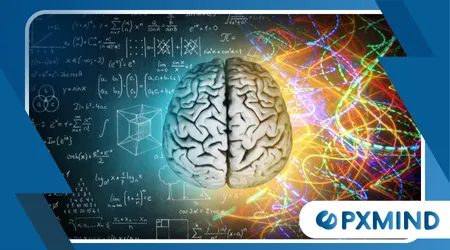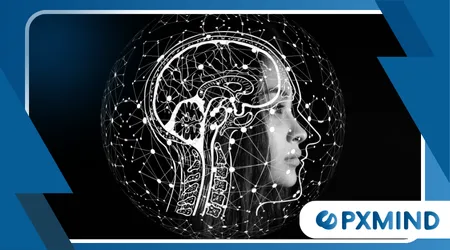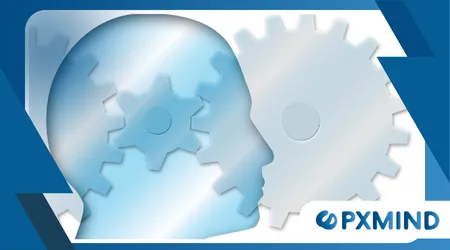How the Brain Processes Emotions

How the Brain Processes Emotions. Our emotional landscape is a masterful orchestration, with different brain regions playing distinct roles.
Anúncios
The ancient and deeply rooted limbic system is often seen as the heart of this process. It’s a collection of structures that work together to give rise to what we call “feelings.
” It’s responsible for the raw, immediate responses we have to the world around us. This system, for instance, springs into action the moment you feel a jolt of fear or a wave of joy.
The amygdala is a tiny, almond-shaped structure within this system. It’s like the brain’s alarm bell, constantly scanning for threats.
If you suddenly hear a loud bang, the amygdala fires, triggering a rapid fight-or-flight response.
This is a primal, hardwired reaction, happening before you even consciously understand what’s happening. It’s the very foundation of our survival instincts.
Another key player is the hippocampus, known for its role in memory. It helps contextualize emotions, linking them to specific past events.
This is why a certain smell or song can instantly transport you back to a specific moment and the feelings associated with it.
The hippocampus provides the narrative to our emotional experiences, connecting feelings to our personal history.
This interplay creates a rich tapestry of memories, both good and bad, that shape who we are.
The Prefrontal Cortex: The Brain’s Rational Conductor
While the limbic system provides the raw emotional input, the prefrontal cortex acts as the rational conductor.
Located at the front of the brain, this region is responsible for higher-level thinking, decision-making, and social behavior.
It helps us regulate our emotions, stopping us from acting on every impulse.
Consider a moment of road rage. Your amygdala might be screaming, “Get angry!” But your prefrontal cortex steps in, reminding you of the consequences of an aggressive act.
It’s the voice of reason that allows you to pause and re-evaluate the situation.
This intricate balance between the emotional and rational parts of the brain is crucial for effective social interaction. It’s the reason we can live in complex societies.
Read here: The Role of Dopamine in Motivation and Reward
This cortical control isn’t always perfect, of course. For example, during a high-stress situation, the amygdala can overwhelm the prefrontal cortex, leading to impulsive actions.
It’s the mental equivalent of a car’s engine roaring, while the driver struggles to hit the brakes.
The prefrontal cortex is also responsible for developing empathy, allowing us to understand and share the feelings of others.
This sophisticated ability is a cornerstone of human connection and compassion.
Neurotransmitters: The Chemical Messengers of Mood
Our emotions are not just electrical signals; they’re also a result of a complex chemical soup.
Neurotransmitters are the brain’s chemical messengers, and they play a massive role in shaping our emotional states.
Dopamine, for instance, is often linked to pleasure and reward. It’s what gives you that feeling of satisfaction when you achieve a goal.
Serotonin, on the other hand, is a key player in regulating mood and happiness.
A study published in the journal Nature Neuroscience highlighted the dynamic role of specific neurons in regulating emotions.
Researchers found that a small cluster of neurons in the brain’s lateral habenula, a key brain region for processing aversive stimuli, can effectively control the intensity of fear responses.
This research further solidifies the idea that our emotions are governed by highly specific, molecular-level interactions.
See how interesting: The Role of Sleep in Brain Health and Memory
The balance of these neurotransmitters is vital. An imbalance can lead to a range of mood disorders, from depression to anxiety.
This is why many antidepressants work by targeting serotonin levels, aiming to restore emotional equilibrium.
So, to truly grasp How the Brain Processes Emotions, we must understand the intricate dance of these tiny chemical messengers.

Examples of Emotional Processing in Action
Let’s consider a couple of real-world scenarios to illustrate this dynamic. Imagine you’re walking in a park and a dog, off its leash, barks loudly and runs toward you.
Your amygdala immediately signals danger, and your body floods with adrenaline. You might jump back or freeze.
However, as the dog wags its tail, your prefrontal cortex assesses the situation. It recognizes the dog isn’t a threat, and the initial fear subsides.
This is a clear example of the amygdala’s rapid, primal response being modulated by the more rational prefrontal cortex. This is how we constantly adapt to our environment.
In another example, consider the joy a parent feels when their child takes their first steps.
++ How to Set Boundaries Without Feeling Guilty
The sight and sound trigger a massive release of dopamine and oxytocin, creating a powerful feeling of happiness and bonding.
The hippocampus then links this joyful feeling to the specific memory, solidifying it forever. These chemicals are the tangible feelings of love and pride.
The brain processes emotions in a way that not only reacts to the world but also actively builds memories and relationships.
The Brain as a Government
You can think of the brain’s emotional processing system as a complex government.
The limbic system, with the amygdala at its center, is like the national security agency, constantly on high alert and ready to respond to any perceived threat.
It’s fast, efficient, and operates on instinct. The prefrontal cortex, in this analogy, is the executive branch.
It analyzes information, weighs consequences, and makes long-term decisions. It’s the leader that keeps the entire system in check.
This analogy helps us understand why we often feel a conflict between our gut feelings and our rational thoughts.
The security agency (amygdala) might want to react immediately, while the executive branch (prefrontal cortex) urges caution and a more measured approach.
This internal dialogue is fundamental to How the Brain Processes Emotions.
| Brain Region | Primary Role in Emotion | Function |
| Amygdala | Fear & Threat Detection | Immediate, automatic emotional responses. |
| Hippocampus | Memory & Context | Links emotions to specific memories and past experiences. |
| Prefrontal Cortex | Regulation & Decision-Making | Modulates and controls emotional responses; rational thought. |
| Nucleus Accumbens | Reward & Motivation | Generates feelings of pleasure and satisfaction. |
| Anterior Cingulate Cortex | Empathy & Social Awareness | Monitors emotional conflicts and helps with social cues. |

The Future of Understanding Our Emotional World
Our understanding of How the Brain Processes Emotions continues to evolve at a rapid pace.
Advancements in fMRI and other neuroimaging technologies are giving us unprecedented views into the brain’s inner workings.
We are moving from a general understanding to a more specific, circuit-level analysis of feelings.
With these developments, we can anticipate more targeted treatments for a range of mental health conditions.
The future will likely see a deeper integration of AI and neuroscience, helping us model and predict emotional responses with greater accuracy.
This could revolutionize therapeutic approaches and even inform how we design technologies.
A statistic from a recent study by the National Institute of Mental Health shows that approximately 1 in 5 adults in the U.S. experiences a mental illness each year, highlighting the profound importance of this field of study.
Our emotions are not just fleeting feelings; they are a complex, scientifically demonstrable product of our biology and our environment.
So, isn’t it incredible to think that every tear, every laugh, and every moment of fear is a tangible, physical process happening inside our heads?
This remarkable understanding shapes how we view ourselves and others, providing a profound insight into what it means to be human.
Ultimately, How the Brain Processes Emotions is a beautiful and intricate dance that truly defines our existence.
Frequently Asked Questions
How does stress affect the brain’s emotional processing?
Stress, particularly chronic stress, can dysregulate emotional processing.
It can lead to an overactive amygdala, making a person more prone to anxiety and fear, while simultaneously weakening the prefrontal cortex’s ability to regulate these emotions.
Can we learn to control our emotions?
Yes, we can. Techniques like mindfulness and cognitive-behavioral therapy (CBT) work by strengthening the prefrontal cortex’s ability to regulate emotional responses.
This allows us to reframe our thoughts and reactions, gaining more control over our emotional state.
Is emotional intelligence a real thing in neuroscience?
Absolutely. Emotional intelligence is a recognized concept in neuroscience.
It involves the ability to understand and manage one’s own emotions, as well as to recognize and influence the emotions of others.
This is primarily a function of the prefrontal cortex working in concert with the limbic system.
